#Belgian Air Force
Text

Belgian Air Force representing at RIAT
#Belgian Air Force#F-16 Viper#Military#aviation#fighter#aircraft#Airplane#Jet#airshow#RIAT#Fairford#F-16 Demo
72 notes
·
View notes
Video
Wallpaper #174 by Laurent Quérité
Via Flickr:
FA-101 / 6H-101 - General Dynamics (Lockheed-Martin) F-16 Fighting Falcon Meeting Aérien Airshow Belgian Air Force 2 wing F16 Solo Display Pilote : Vador BA 115 Orange Caritat LFMO France IMG_9520
#CanonFrance#Canon EF 100-400mm f/4.5-5.6L IS USM#Canonphotography#Canon EOS 7D#Aviation#Aéronef#Avgeeks#Aviationlovers#Aviationphotography#Avion#Military Aircraft#Meeting Aérien#Airshow#Belgian Air Force#Belgian F16 Solo Display#2 Wing#Vador#BA 115#LFMO#Orange Caritat#France#FA-101#General Dynamics#Lockheed Martin#F-16#Fighting Falcon#Fond d'écran#Wallpaper#Laurent Quérité#flickr
36 notes
·
View notes
Video
Augusta A109 'Razzle Blades' (2022) by Ismael Jordá
Via Flickr:
AirPower 2022 - www.ismaeljorda.com - Nikon D850 + 600VR @ 1/200 f13 Iso64
#Augusta#A109#Helicopter#Military#Belgian Air Force#Flares#Airpower22#Airpower#ismaeljorda#Nikon#D850#600VR#flickr
2 notes
·
View notes
Text

F-16 • BELGIAN AIR FORCE 🇧🇪
A4 • STABILO point 88 liners & Pilot permanent marker
#f-16#f 16 fighting falcon#f 16 viper#belgian air force#aviation art#aviation drawing#aviation geek#zentangle drawing#zentangle artwork#zentangle patterns#zentangle illustration#fineliner art#fineliner drawing#fineliner artwork#stabilo point 88#artwork#artists on tumblr#fighter jet#fighter aircraft#military aircraft
1 note
·
View note
Text

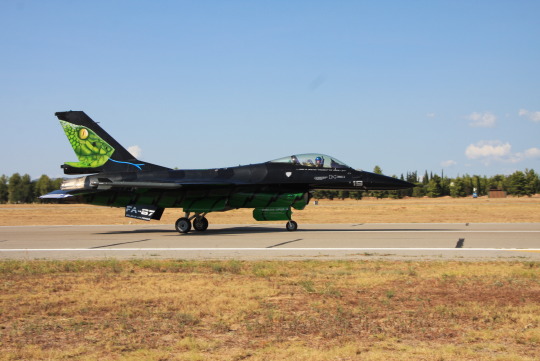



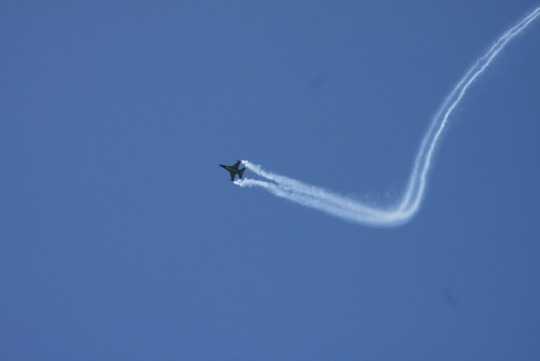
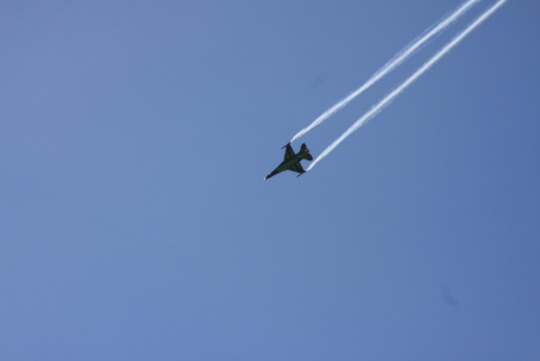
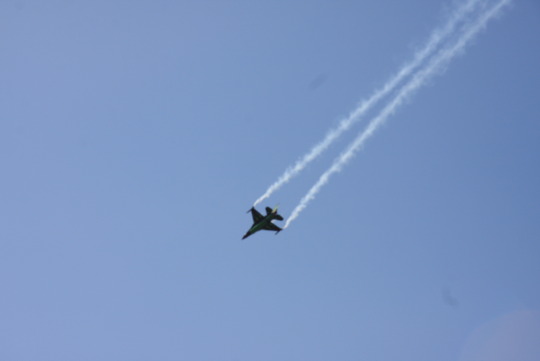

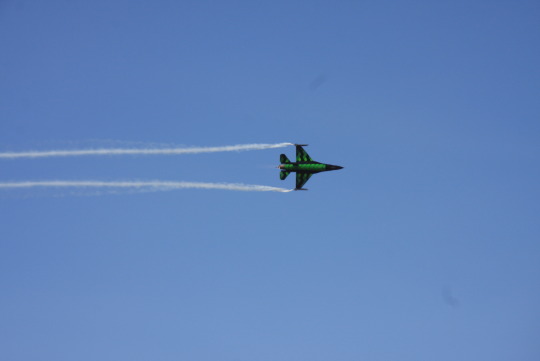

General Dynamics F-16 MLU _ Senior Captain Steven De Vries _ Belgian Air Force _ Tanagra Air Force Base _ Athens Flying Week, Greece [02.09.2023] _ Photos by: Spyros Kaprinis.
#F-16 MLU#Belgian Air Force#Senior Captain Steven De Vries#Tanagra Air Force Base#Athens Flying Week#Greece#Spyros Kaprinis#2023#General Dynamics
0 notes
Photo

On this day, 17 April 1958, Belgium opened the world's fair, which included a ‘human zoo' displaying Black men, women, and children in their supposed 'native conditions' found in the Congo, then a Belgian colony. The people used were abused and taunted by white spectators, who threw money and bananas over the bamboo fence to try to provoke a reaction. One Belgian journalist reported on how, on one occasion, a white woman threw half a candy bar over the fence to a young Congolese boy, who promptly threw it back at her "without even looking up, with an air of noble contempt." The Congolese people in the exhibit, as well as Congolese workers in the fair, were housed in an isolated building, in cramped accommodation with restrictions on receiving visitors or being able to leave. The exhibition was widely praised in Belgium at the time, with even socialist newspaper Le Peuple declaring that its "story… [was] in complete agreement with historical truth", and showed how Congolese people had been brought from "the night of prehistory to the light of civilisation". Authorities intended for the exhibit to continue until October, however, they were forced to return the Congolese inhabitants home in July due to them resisting their inhumane treatment, and not tolerating it any further. Racist human zoos took place in many countries, including the US, UK, Germany, and Norway, with the last one we are aware of being held in France in 1994. Belgian colonialism in Congo is estimated to have killed eight to 15 million people. More information, sources and map: https://stories.workingclasshistory.com/article/8853/belgian-human-zoo https://www.facebook.com/photo.php?fbid=610421221131097&set=a.602588028581083&type=3
812 notes
·
View notes
Text
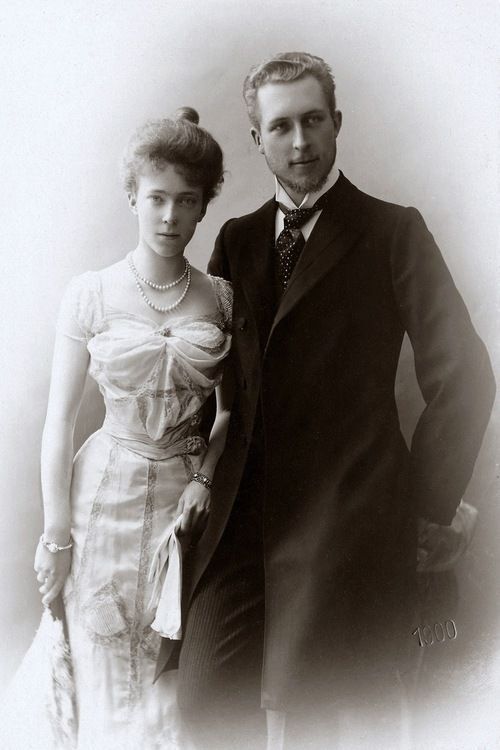
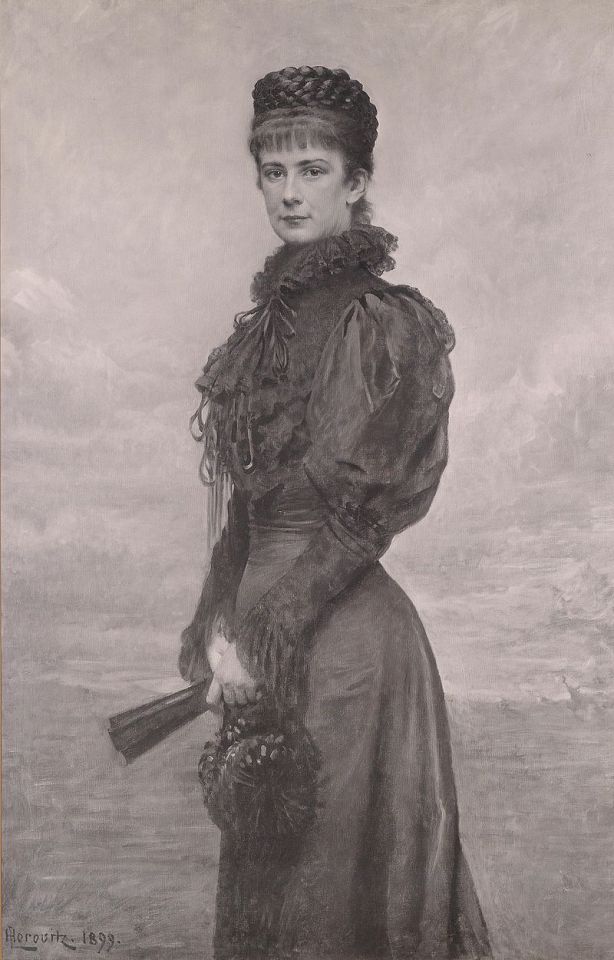
The Wittelsbachs of the branch of dukes in Bavaria, of an independent and wild character, were too contemptuous of the conventions of the century. Among them, respect for their own freedom had the force of law and even bordered on insolence. My father [Albert I of the Belgians] often told me of his atonishment at seeing, during one of his stays in Possenhofen, the duke Karl-Theodor left for a horseback ride at the very moment his sister the empress Elisabeth of Austria, wife of Franz-Joseph, without even greeting her even though they hadn’t seen each other for months.
My mother [Queen Elisabeth, née Duchess in Bavaria] admired the empress, her aunt and godmother. A certain quality of emotion and aesthetic sensibility unite them. But when the empress said “When I move among people, I only use for them the part of myself that I have in common with them. They are surprised at our resemblance, but it is an old piece of clothing that from time to time I take out of the wardrobe to wear for a few hours”, my mother, for her part, could not have taken this attitude, because all her life, she shared the best of herself with others, and this with generosity and a total absence of condescension.
The pagan that was the empress, imbued with the beauties of ancient Greece, had passed on to her niece a certain number of hygienic advices: pluge no matter when into glacial water, walk indefinitely in all weathers, as well as number of other precepts that she cultivated until the end of her days. Let us add to this some principles of geriatrics kept jealously secret.
What my mother deplored about her aunt was her insubordination to the rigid etiquette of the Court of Vienna, insubordination which alienated the Austrian aristocracy. Besides, her prolonged absences from the capital and her costly wanderings earned her the reputation of being at least whimsical.
“…In our positions, we must avoid being given a label that we will never get rid of,” assured my mother. How many characters from history have had sad reputations, often undeserved, for this sole reason.
My father granted more indulgence to “this beautiful creature”, as he called her. Besides her beauty, he admired her deep intuitive sense of events and things. According to him, the Empress foresaw the imminent collapse of the heterogeneous amalgam that the Austro-Hungarian Empire had become. We have preserved some verses from her quite academic but very prophetic, written in 1893:
“How right you are, Habsburg, to cover
[your head
“How right you are to wring your hands
“Think then of your departed race
“Never again will your children reign over your
lands!”
Powerless, Elisabeth of Austria fled from her cruel destiny without seeking to dominate it. She was freed by the knife of a fanatic on the banks of peaceful Lake Geneva. “I would like to escape from my body, like a little bird from its cage,” she frequently said to her relatives. Let's listen to Barres who summarizes in a few lines the wandering existence of this nihilistic sovereign, thirsty for the absolute: "… Her movements did not have the beautiful and reasonable regularity of the migrations of a traveling bird, it was rather the whirling of a a lost spirit which beats the air, which no longer finds shelter and which no discipline regulates.” In similar circumstances, my mother would certainly have overcome the adversities of life because, in her, confidence and energy dominated events through an instinctive sense of the mysterious laws of life and through a concrete vision of the responsibilities to be assumed.
Marie-José of Belgium (1971). Albert et Elisabeth de Belgique, Mes Parents
#empress elisabeth of austria#queen elisabeth of the belgians#albert i of the belgians#queen marie josé of italy#albert et elisabeth de belgique mes parents
36 notes
·
View notes
Text

SABCA F-16 Fighting Falcon
FA-87 - Belgian Air Force
103 notes
·
View notes
Photo

Dunkirk Evacuation
The Dunkirk Evacuation of 26 May to 4 June 1940, known as Operation Dynamo, was the attempt to save the British Expeditionary Force in France from total defeat by an advancing German army. Nearly 1,000 naval and civilian craft of all kinds, aided by calm weather and RAF air support, managed to evacuate around 340,000 British, French, and Allied soldiers.
The evacuation led to soured Franco-Anglo relations as the French considered Dunkirk a betrayal, but the alternative was very likely the capture of the entire British Expeditionary Force on the Continent. France surrendered shortly after Dunkirk, but the withdrawal allowed Britain and its empire to harbour its resources and fight on alone in what would become an ever-expanding theatre of war.
Germany's Blitzkrieg
At the outbreak of the Second World War when Germany invaded Poland on 1 September 1939, France was relying almost entirely on a single defensive line to protect itself against invasion. These defences were the Maginot Line, a series of mightily impressive concrete structures, bunkers, and underground tunnels which ran along France's eastern frontiers. Manned by 400,000 soldiers, the defence system was named after the French minister of war André Maginot. The French imagined a German attack was most likely to come in two places: the Metz and Lauter regions. As it turned out, Germany attacked France through the Ardennes and Sedan on the Belgian border, circumventing most of the Maginot Line and overrunning the inadequate French defences around the River Meuse, inadequate because the French had considered the terrain in this forested area unsuitable for tanks. Later in the campaign, the Maginot Line was breached near Colmar and Saabrücken.
To bolster the defences of France, Britain had sent across the British Expeditionary Force (BEF) under the command of General John Vereker (better known by his later title Lord Gort, 1886-1946). Around 150,000 men, mostly infantry, had arrived in September 1939 to strengthen the Franco-Belgian border. The BEF included the British Advanced Air Striking Force of 12 RAF squadrons. The aircraft were mostly Hawker Hurricane fighters and a few light bombers, all given much to the regret of RAF commanders who would have preferred to have kept these planes for home defence. The superior Supermarine Spitfire fighters were kept safely in Britain until the very last stages of the battle in France. The BEF had no armoured divisions and so was very much a defensive force, rather than an offensive one. More infantry divisions arrived up to April 1940, so the BEF grew to almost 400,000 men, but 150,000 of these had little or no military training. As General Bernard Montgomery (1887-1976) noted, the BEF was "totally unfit to fight a first class war on the Continent" (Dear, 130). In this respect, both Britain and France were very much stuck in the defensive-thinking mode that had won them the First World War (1914-18). Their enemy was exactly the opposite and had planned meticulously for what it called Fall Gelb (Operation Yellow), the German offensive in the west.
Totally unprepared for a war of movement, the defensive-thinking French were overwhelmed in the middle weeks of May 1940 by the German Blitzkrieg ("lightning war") tactics of fast-moving tanks supported by specialist bombers and smartly followed by the infantry. German forces swept through the three neutral countries of the Netherlands, Luxembourg, and Belgium. The 9th Army punched through the Ardennes and raced in a giant curve through northeast France to reach the coast around Boulogne. The BEF and the northern French armies (7th and 1st) were cut off from the rest of the French forces to the south. Germany had achieved what it called the 'Sickle Slice' (Sichelschnitt). By 24 May, the French and British troops were isolated and with their backs to the English Channel, occupying territory from Dunkirk to Lille. Although there were sporadic counterpunches by the defenders, Gort had already concluded that the French army had collapsed as an operational force. Gort considered an attack on the Germans to the south, which he was ordered to make, would have achieved very little except the annihilation of his army. The BEF must be saved, and so he withdrew to the north.
Continue reading...
23 notes
·
View notes
Text
Why has Belgium vowed to back the ICJ’s verdict on Gaza ‘genocide’?
Unlike other European nations, Belgium has said it would support the international court’s decisions on South Africa’s case against Israel.
As the world anticipates a preliminary verdict from the International Court of Justice (ICJ) on South Africa’s genocide case against Israel, leaders in the European Union remain divided on how to interpret the decision.
Shortly after the two-day hearing at the world’s top court in the Hague earlier this month, where South Africa told the ICJ that Israel’s actions in the Gaza strip violated the UN’s 1948 Genocide Convention, Germany, Austria and the Czech Republic – staunch allies of Israel – rejected these claims. Hungary condemned the case, while Berlin declared that it would intervene on Israel’s behalf at the ICJ.
Last week, France, which is home to Europe’s largest Muslim and Jewish minorities and has been in the headlines for banning pro-Palestine protests since October 7, chimed in, saying Paris also does not support the ICJ case against Israel.
“To accuse the Jewish state of genocide is to cross a moral threshold,” said French Foreign Minister Stephane Sejourne.
Other EU nations have remained silent on the court case.
Slovenia is an exception, having announced its support for another ICJ case against Israel regarding Palestinian rights.
And, among the bloc’s more outspoken critics of Israel’s military conduct in Palestine, Ireland has adopted a cautious stance. In Spain, the minority left-wing Sumar party in the coalition government backed South Africa’s case.
Last week, in Belgium, socialist politician Caroline Gennez, minister of development cooperation and urban policy, said the country would support to the ICJ’s decision.
“If the International Court of Justice calls on Israel to cease its military campaign in Gaza, our country will fully support it,” she said in a social media post.
At a news conference in Brussels on Friday, Ludivine Dedonder, defence minister, reiterated: “Today, the Belgian government is speaking out in favour of an immediate ceasefire in Gaza, the unimpeded delivery of humanitarian aid, and support for the ICJ.”
What’s behind Belgium’s position?
The prevailing European view since October 7 has been that Israel has a right to self-defence against the Palestinian group Hamas, as long as it stays within the boundaries of international law.
But as the latest escalation of the Israel-Palestine conflict rages on, some Belgian leaders have been more openly critical of Israel’s actions as the Palestinian death toll mounts.
After Hamas attacked southern Israel in early October, killing 1,139 people, Israeli forces have bombarded Gaza, the densely populated Strip Hamas governs with a pre-war population of 2.2 million people. During air attacks and as part of its ground invasion, the Israeli army has killed more than 25,000 people, among them many women and children, and stands accused of widespread atrocities.
In November, the Belgian government, a coalition of seven political parties, said 5 million euros ($5.4m) from the federal government will be used to support the International Criminal Court (ICC) in The Hague to investigate possible war crimes in Israel and Gaza.
Brigitte Herremans, a postdoctoral researcher at the Human Rights Centre at the University of Gent in Belgium, told Al Jazeera the tiny European country traditionally adopts strong positions on international law with regard to the Middle East conflict.
“Observers would say that it also has to do with Belgium’s own history of being occupied historically by foreign powers,” she added.
During both world wars, Belgium was under German occupation.
Herremans said that Belgium’s stance today is similar to its previous positions on other foreign policy issues, such as the Iraq war.
“In general, we always saw Belgium somehow stick to a position that the acquisition of territory by force wasn’t accepted,” she said.
But Marc Botenga, of Belgium’s leftist Workers’ Party and an EU lawmaker, said the government’s support to the ICJ is still limited.
“If you look closely at their statement there is no active attitude to actually support the South African case against Israel. The government just says they will support whatever decision the ICJ takes, which is logical since all member states of the United Nations are supposed to support the institution’s court,” Bottenga told Al Jazeera. “However we have to commend the Belgian public for this stance which other EU nations have not really taken.”
Large protests in different Belgian cities have played a role in pressuring the government to call for a ceasefire in Gaza, he said.
Meanwhile, Belgium has declared its participation in the EU Red Sea Mission against Yemen’s Houthis, the Iran-linked group which says its recent attacks on ships linked to Israel or its allies are aimed at pressuring officials to stop the onslaught of Gaza.
“That’s not the kind of stance we want,” Bottega said of Belgium’s participation.
Herremans said that since Belgium currently holds the presidency of the Council of the European Union – a decision-making body in which ministers coordinate policies and adopt laws – his country is responsible for developing consensus.
“Belgium has to take into account the position of staunch pro-Israeli countries, so [it] might have to be more cautious and less vocal on international law. But it will not take a fundamentally different position from what it always has,” she said.
Belgium’s position on Israel-Palestine
Historically, Belgium has shown solidarity towards Palestine while also supporting Israel.
At the UN in 2012, it voted in favour of giving Palestine “non-member” observer status. Last year, it supported a UN resolution ordering the ICJ to investigate the Israeli occupation of Palestinian territories.
But discussing the Israeli-Palestinian issue in the Parliament can be difficult, because of diverse views between political parties in the Flanders in the north, Wallonia in the south, and the Brussels region.
Some Belgian sources told Al Jazeera that of the seven coalition partners, the progressives – Greens and Social Democrats – believe concrete measures have to be taken to ensure international law is applied in the Gaza Strip and the occupied West Bank with regard to the ICJ case.
In recent months, the Flemish Liberal Party of Prime Minister De Croo and Flemish Christian-Democrats have also toughened their stance on the situation in Palestine.
In November, the premier described Israel’s campaign in Gaza as “disproportionate” as he condemned the army’s bombing of Gaza refugee camps.
But the French-speaking Liberal Party, to which the foreign affairs minister belongs, has traditionally been pro-Israel.
Elections
Looking ahead, Belgium heads to the polls in June, which could end up shifting the country’s stance if a new government comes into power.
Fourat Ben Chikha, vice president of the senate, the federal parliament’s upper house, told Al Jazeera that even if the current coalition changes, as an international community, de-escalation and respect for human rights and international law should be every Belgian government’s priority.
Willem Staes, senior Middle East adviser at 11.11.11, a Belgian international solidarity organisation which lobbies Belgian and European governments to uphold human rights, said that regardless of the Belgian government’s composition, foreign policy has traditionally focused on fighting against impunity and promoting accountability.
“The current government is consequently applying this logic and leading the way at EU level. So providing support to the ICJ and the ICC, or calling for a permanent ceasefire, is not about being ‘pro-Palestinian’ or ‘anti-Israel’,” Staes told Al Jazeera.
“It’s about common sense and choosing the only logical side, which is the side of international law. The fact that this is considered ‘radical’ by some tells you everything you need to know about the state of European politics.”
#international court of justice#icj#belgium#free palestine#palestine#save palestine#gaza#save gaza#free gaza#world news#current events#israel#israel palestine conflict#israeli apartheid#war on gaza#gaza strip#gazaunderattack#gaza genocide#palestinian genocide#ceasefire#stop the genocide#genocide
48 notes
·
View notes
Text
Dakar Chaos Roundup: Stage 1
Honda rider Joaquim crashed at the 82km mark, bringing out the medical helicopter early on
Later in the day, Tosha Schareina, leading overall in the bike category, had a fall and broke his wrist
Ross Branch stopped to help him and crossed the line in 16th. In the tradition of the Dakar Rally the time he spent with Schareina was deducted from his time and he ultimately won the stage by more than 10 minutes
Century's Brian Baragwanath was supposed to start first for the car category, but didn't show up in time, prompting Lionel Baud to begin first. About 200m from the startline Baud had an incident with a Russian tourist who was seemingly away from the advised viewing area. The tourist was given medical treatment and has been transported to hospital
Belgian driver Guillame de Mevius won the first stage after starting 32nd, in his maiden Dakar attempt
Carlos Sainz finished 2nd, but claimed that 3 punctures had set him back about 15-20 minutes. Nasser Al-Attiyah, Dakar legend who had a terrible day himself, called him a liar. It's worth pointing out that the drivers only take two spares with them. Sainz says that they managed to get air back into one of the tyres and continue but is not clear on how
Brazilian driver Rodrigo Varela was informed in late December that the cargo ship carrying his Dakar UTV had been attacked by pirates in the red sea (thank you to @huginn01 for alerting me to this). Although the ship eventually escaped the pirates, the detour it was forced to take meant that it would not arrive in time for Dakar. Varela was forced to put together a last minute UTV entry, and has shown up to Dakar without much of the maintenance equipment needed, including a power generator. Varela and his co-driver Bozzano shocked everyone by finishing 5th in the Prologue, and did even better on Saturday, winning Stage 1
34 notes
·
View notes
Text

"Dream Viper"
32 notes
·
View notes
Video
FB-22 / 6J-22 - General Dynamics (Lockheed-Martin) F-16BM Fighting Falcon by Laurent Quérité
Via Flickr:
80 ans Gusto Belgian Air Force F16 Solo Display 2 Wing BA 115 LFMO Orange Caritat France IMG_7112
#Canon EF 100-400mm f/4.5-5.6L IS USM#CanonFrance#Canonphotography#Canon EOS 5D Mark II#Aviation#Aéronef#Avion#Avgeeks#Aviationlovers#Aviationphotography#Military Aircraft#80 ans Gusto#Belgian Air Force#Belgian F16 Solo Display#2 Wing#BA 115#LFMO#Orange Caritat#France#FB-22#General Dynamics#Lockheed Martin#F-16 BM#Fighting Falcon
3 notes
·
View notes
Video
F16 "VRIESKE" (2022) by Ismael Jordá
Via Flickr:
AirPower 2022 - www.ismaeljorda.com - Nikon D850 + 600VR @ 1/1250 f5.6 Iso64
#F16#Falcon#Belgian Air Force#Airpower22#Afterburner#Vrieske#Clouds#Smoke#Airpower#ismaeljorda#Nikon#D850#600VR#Dream Viper#flickr
2 notes
·
View notes
Text
Meet Lando Norris, the woke, feminist face of Formula One
The 23-year-old McLaren driver is equally happy driving at more than 200mph or talking about his feelings. Sathnam Sanghera meets the new poster boy for petrolheads
Let’s face it, in the Eighties and Nineties, when I was getting into the sport, a certain kind of man was attracted to driving Formula One cars. Habitually egotistical, frequently misogynistic, oblivious to the environmental consequences of driving a high-powered car in circles for the sake of it, this unreconstructed male would also, with some 52 drivers losing their lives over the years, have something of a death wish. No one demonstrates how much things have changed than the McLaren F1 team’s current lead driver, 23-year-old Lando Norris.
Having recently broken up with the model Luisinha Oliveira, the Brit is a red-blooded young man who tells me with a certain amount of excitement that he’s the driver with the highest rating among female F1 fans, but when asked about the absence of women F1 drivers, he doesn’t, as Jenson Button once did, say that mechanics wouldn’t be able to concentrate near the presence of “boobs”. Instead, he launches into an earnest explanation of how things can and should change. Followed by a list of the ways he and McLaren try to make up for the environmentally unfriendly nature of racing cars.
When it comes to the death wish, Norris admits that his Belgian mother “hates” watching him race because of the risks involved, but safety has improved so much that survival is only an occasional anxiety for him. And as for the hard living, there’s a plastic tub on the table between us informing me that the only thing that has passed his lips this morning is porridge.
“Everything looks easy from the outside,” he says, launching into an explanation of the self-discipline and athleticism required to pilot modern F1 cars. “People don’t realise how physical it is, the G-force side of it. You’re not far off what they do in jet fighters. You then have two-hour races, racing in, you know, Singapore, where it’s 35C, extremely humid, you’re in a cockpit where you don’t get a lot of air flow, so it gets up to 50C inside the car and you can easily lose three, four kilos in some races. It’s one of the most physical sports you can do. And then there’s the mental side of it: if you’re racing in Monaco, one mistake and you’re out pretty much straight away.”
Sitting in a private box at the London Stadium, the site of a Major League Baseball game this weekend and a collaboration event between the baseball players and McLaren today, he tells me about the endurance, cardio and heat-chamber training involved; the difficulty of strengthening neck muscles, essential to withstanding extreme G-forces. Frankly, I can’t imagine him undergoing any of it. It’s partly that he’s just so wilfully unmacho — the single gentlest sportsperson I’ve ever met. It’s also that, at 10st 7lb and 5ft 9in, and looking even younger than his 23 years, he resembles a boy-band member rather than an automotive gladiator. Which probably explains the female fan base.
Make no mistake, though, that Norris is ferocious on the track, frequently out-racing people who almost have more years of F1 experience than he has experience of existence. His once mighty team, McLaren, 60-years old this year, has not delivered the best car this season, but recent upgrades allowed him to attain fifth position, and widespread praise, at this month’s Austrian Grand Prix. And he has been recognised for consistently getting the best out of his cars from his earliest days, beginning racing at the age of just 7 and winning several junior titles before being named McLaren’s test and reserve driver at the age of 17.
He was quickly promoted, his performances eventually making his team-mate Daniel Ricciardo look average, with McLaren replacing him with fellow Australian Oscar Piastri at the end of the 2022 season. Meanwhile, two-time world champion Mika Hakkinen has claimed that Norris is “on the same level” as reigning F1 champion Max Verstappen.
As a reflection of the esteem in which he is held, Norris recently agreed a contract extension with McLaren, which, according to one motorsport magazine, makes him the fourth best-paid driver in F1. When I cite the reported annual salary of about £19.4 million, he concedes it’s “in that ballpark”. An extraordinary amount of money — if you were not already the son of one of the richest men in Britain, of course. Norris got into motor racing with the backing of his 51-year-old father, Adam, whose wealth is estimated in excess of £200 million, mainly from his involvement in the investment platform Hargreaves Lansdown. As a result, asking how money has changed his life is not a particularly fruitful line of questioning. What does he spend it on? On experiences with his friends, “creating memories”. Has he splashed out? He can’t think of anything, but then his company car is a McLaren supercar and he travels the planet in luxury for work anyway.
Nevertheless, his rise raises a perennial anxiety for the sport. Can you make it in F1 without being born into money? Norris, who attended Millfield School in Somerset but didn’t do his GCSEs due to already intense motorsport commitments, is characteristically unprickly on the theme. “It’s 100 per cent very, very clear for anyone”, he says, to see that his dad financed his entry into F1. But he insists, “You have to have talent to make it. You’ll never get to Formula One now if you’re a bad driver. I was lucky I didn’t have to find too many sponsors and my dad could support me all the way to F1, but I couldn’t deal with being a pay driver in F1. I think it’s the wrong thing to do, completely.”
By “pay driver”, Norris is referring to the rich young men who occasionally buy a seat in the sport, usually in the form of sponsorship, Russia’s Nikita Mazepin being a recent example at Haas. “There’s no other sport in the world where you can pay just to be in it. It shouldn’t happen in Formula One. But it’s also one of the most expensive sports to get into — you can’t just pick up a go-kart like you can pick up a football or a racket or baseball bat.”
I ask how he thinks his generation of drivers differs from the old guard, and he cites a bunch of factors I’ve not considered. Not least that his generation has grown up practising on the high-tech simulators now used by all F1 teams, and playing computer games for fun. Such games were one of the things that brought Norris to prominence in 2020, when his internet broadcasting of game-playing became popular with motorsport fans deprived of racing. He has since founded his own esports firm, Quadrant. But does playing car games on consoles actually help develop real-life skills? “I don’t think it hurts. But they’re not even games; they’re simulators.” They’re that good? “Yes, certain ones. You’re racing actual people around the world who are very talented, racing other F1 drivers. You’re learning all sorts of race craft, the set-up, handling, car control.”
Growing up with social media is another difference that he cites. It brings up the mental-health struggles Norris has talked about suffering since entering F1, where the pressure can be extreme. But it sounds as if it’s something he has, for now, worked out how to navigate. He has removed Twitter from his phone, but more to stop himself wasting time than because of abuse. “Every person, every sport, people love you and people hate you. Of course, I’d prefer if people loved me. But I just laugh at it more than anything [now]. It affected me a lot more back in, like, 2019, 2020, because I took it all more personally.”
Why was that? “I was just starting out and wanted everyone to like me more.”
This more relaxed attitude is also in evidence in his approach to Netflix’s blockbuster show Drive to Survive, which he has criticised in the past for faking tension with his former team-mate Carlos Sainz, but which he now accepts as entertainment. “Some things get twisted a little bit, but at the same time I realise it’s a show.”
Norris stretches in a way that indicates tiredness, and it’s entirely understandable. I’m knackered from my journey from north to east London, but he finds himself in the capital after three days of travel that have taken in Canada, Cannes and McLaren HQ’s in Surrey. F1 is an exhausting line of work. And the circus is often surreal. Through a window behind him, a McLaren car can be seen being wheeled onto the pitch for the photoshoot: a slice of F1 in West Ham’s football stadium, which has been converted to a baseball diamond for the weekend (and hosted the athletics at the 2012 Olympics). I ask if he’s a football fan. “I used to be.” I know the feeling, I say, wanting to disown Wolverhampton Wanderers when they disappoint. His team? “England.”
It takes a moment to realise this is a sardonic reference to another instance of unwanted attention, in the form of the mugging he suffered in July 2021. As widely reported, an unidentified man held Norris in a headlock while another yanked a £144,000 Richard Mille watch off his wrist. The timepiece was one of just five in existence. It happened at Wembley Stadium as he made his way to his sports car following England’s loss to Italy in the final of Euro 2020. In a remark that some might consider strange given Norris sometimes drives at walls at nearly 200mph, he says, “I didn’t realise how quickly things can go completely… scary.”
Did it change the way he feels about going out and about?
“I don’t wear watches any more.”
He means socially: today he is wearing, for sponsorship reasons, another example of the same watch. “It has changed my perspective. There are still times when I get a bit nervous about things, when I’m with my friends.”
The admission of vulnerability is yet another refreshing thing about Norris, but not altogether surprising if you’ve ever heard him talking to his team over the radio during races. He is intensely self-critical. What is he like with failure? Does he let it overwhelm him? “I would say I do, quite often, but it’s really the biggest drive.”
Lots of athletes use failure to motivate themselves, but it can become destructive.
“It’s the main thing I use. I’ve learnt to beat myself up less, but I’m definitely my biggest critic — I mean, I’m the one who knows what I can do and what I can’t do.”
When it comes to the possibilities of achievement, during a season where McLaren has disappointed, currently standing at sixth out of ten teams, below the middle-ranking Alpine, Norris is optimistic. He believes in the team’s aggressive development plan, which has seen it bring car upgrades to recent races. “I probably have the most faith I’ve had in a while.”
Nevertheless, disappointment is a running theme in our conversation. When I ask about the key to surviving success, he responds with, “I’ve not had much success.” I remind him he has had a disproportionate amount of success for his age. “True. But then again, it’s relative to what I’m actually trying to achieve. Success is winning races, winning championships, and I’ve not got anywhere close to doing that.”
When I ask if he feels like he’s following in the footsteps of Lewis Hamilton, given Hamilton also started off at McLaren, he dismisses the comparison as grandiose. “Life’s not fair in Formula One, because things can go up and down completely out of your control as a driver. So it doesn’t matter if you’re the best driver in the world, if you’re in the wrong team, you’re not going to win. You’re not even going to look good.”
Before departing, I ask Norris how he feels about certain descriptions that are frequently applied to him in press coverage.
“Handsome”? “[That comes from] the female audience,” he blushes.
A “fair loser”? “I admit when I’ve done things wrong. I’m the last guy you’ll ever see blame someone else over myself when something happens.”
“Nice”? There are some drivers who would hate the description, being keen to cultivate a fearsome air both on and off the track. “I’m happy with it. As much as I do care about what people think of me, I want to be seen in a good way rather than not. But just because I’m nice in person doesn’t mean it’s the same on the track.”
Finally, “shy”. It’s shyness that has been apparent throughout our meeting, not least when I ask him to give me a demonstration of his Flemish and he can’t bring himself to do it, even though I’d have no idea if it was good or bad. “I’m just an introvert.”
When did he realise he was an introvert?
“When I was, like, six. I’m not great with crowds and all that kind of thing.”
So how does he handle the intense attention from crowds of fans at races?
“You kind of get used to it. I’m not the biggest fan when they grab you, you know?”
How does he cope with the long days of being on camera?
“Alone time — when it’s just me playing games or going for a walk, listening to music.”
Not for the first time, I want to give Norris an avuncular hug. The feeling intensifies after I inquire what advice he would give to his teenage self. When I normally ask people this question they have to think back decades, but Norris only has to recall life before the pandemic. “Be yourself as much as possible: don’t try to pretend to be a Formula One driver.”
Was there a time when he tried to fit himself into those expectations?
“You feel like there’s a persona, of looking like a superstar, and that just doesn’t need to happen. I can have my laughs and my giggles and, you know, sometimes I just drive a car. Simple as that.”
BY SATHNAM SANGHERA FOR THE TIMES
#this is very very very long btw#some things in this im like ????#but yeh it’s got some good bits in there#lando norris
82 notes
·
View notes
Text
writeblr intro!

Well, hello there! Welcome to my page! Thought I'd finally get around to writing and pinning an intro, seeing as my writeblr recommendations post has gone STRATOSPHERIC and I've followed so many new accounts!
I'm Jeb (he/him), 20 years old, and an aspiring writer, poet and disaster dork from New Zealand (who currently lives in the UK - England, to be more precise). I'm a huge lover of writing and reading science fiction works, particularly hard sci-fi - Arthur C. Clarke's Space Odyssey series and his novel The Songs of Distant Earth were the works that inspired a young me to start taking writing seriously. I also write fanfiction, romance, horror, a smidgen of fantasy, spy fiction... whatever takes my fancy, basically! I also love writing and reading poetry, and hope to have some of my poems published professionally by the end of 2023!
Outside of writing, I'm a huge motorsport lover. Formula One is my main passion, and in fact I originally joined tumblr to post about my then-WIP, The Edge Of Control. TEOC may be in cryogenic storage, but my love of speed and high-octane racing remains: I regularly watch F1, IndyCar and the World Endurance Championship. I also love spaceflight, astronomy, Shakespeare, teen movies from the 80s/90s (ESPECIALLY John Hughes' work), many cheesy romcoms and lasagna. (What? It's literally the perfect food!)
Right, now with all that out of the way, let's get onto the real good stuff... (sorry in advance for the lack of taglists, I haven't remembered how they work!)
links to my work:
jebberjabber on AO3 (my main account, for fanfiction)
degnercurve130R on AO3 (for F1/racing works)
KesslerCascade on Wattpad (for original works)
works-in-progress
You Can't Take It Back Now!
type: fanfiction (fandom: Bittersweet Candy Bowl, Webcomic)
genre: romance (of the sapphic, friends-to-lovers variety)
summary: Sue and Amaya have been best friends ever since they met in second grade. They're proudly inseparable, but when a secretive confession from Amaya turns into a sudden kiss from the assuredly-straight Sue, everything changes. Can they navigate their friendship while dealing with their rampant emotions? Is it just drama, or did Sue have more investment into their kiss than she let on?
status: six chapters currently complete, with two published on AO3! Bi-weekly updates planned.
link: You Can't Take It Back Now! on AO3
White Sky
type: original work
genre: hard science fiction/mystery/thriller
summary: It's 2094, and the Earth-Luna Treaty Organisation (ELTO) is planning the upcoming 125th anniversary of the Apollo 11 moon landing. Meanwhile, Katarina 'Kat' Lloyd, a reclusive scientist, is framed for a crime she didn't commit and forced into outer space. Seeking refuge aboard the cislunar debris hauler Dowager Caroline, Kat and the Caroline's motley crew discover that her framing was simply a cog in a much bigger plot - one with dire consequences for mankind...
status: currently in the planning stage, rough draft established and plot outline written
works published on Tumblr:
An Acquired Taste - In a post-cyberpunk/solarpunk imagining of 22nd-century New Seoul, a corporate engineer makes a chance meeting with a street vendor and makes an important discovery.
Executive Decisions - In an alternate history where the Cold War went hot, a US Air Force nuclear-bomber crew face a moral dilemma as they near their Soviet target.
Operation Trident - A soldier experiences a combat drop on the Belgian coast, as part of an ongoing human offensive against an alien occupation force.
Ignition Sequence - An experiment with a second-person perspective where the watcher observes a Space Shuttle launch in Florida.
#writeblr introduction#writeblr#writeblr community#writers on tumblr#fanfiction#science fiction#silverslipstream#writers community
68 notes
·
View notes
